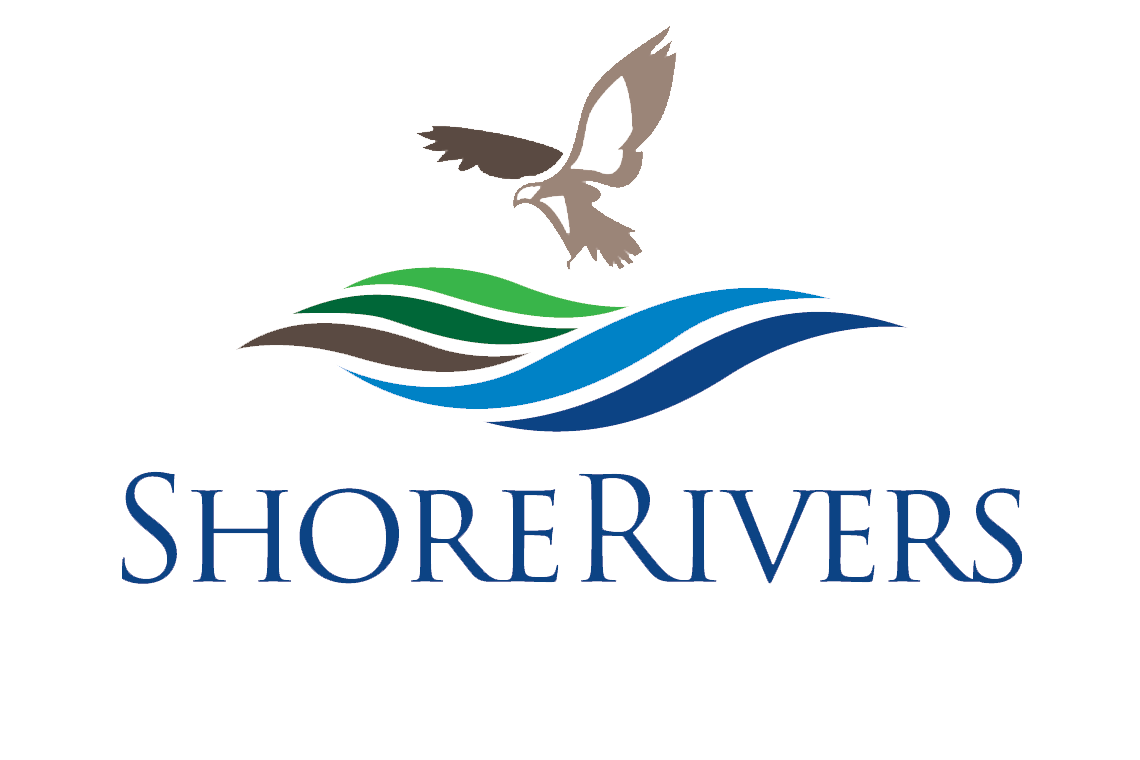Steps to a River-Friendly Yard
1) Attend (or host!) a ShoreRivers workshop for information
Fill out an interest form on our website to schedule or attend a River-Friendly Yards workshop where ShoreRivers staff members will discuss local water quality, explain what a River-Friendly Yard is, and show a variety of practices that homeowners can implement.
2) Analyze your property and create a basic site plan
It’s important to understand the conditions of your property first in order to successfully implement a River-Friendly Yard. Ask yourself questions such as:
Where is water flowing on my property? Are there problem areas (i.e. standing water, erosion, flooding basement, etc.)
What do I want to accomplish? (Pollinator habitat, bird habitat, low maintenance, privacy, etc.)
What are my current soil conditions? Contact your local Extension office for a soil test.
How much shade/sun does my property receive?
Then sketch out a basic site plan showing the flow of water and identifying problems areas and areas you would like to work on. ShoreRivers staff are available for free consultations for your property to provide recommendations and site plans.
3) Research native plants that will work for your property
While native plants are generally hardier than non-native ornamental plants, it is still important to select the appropriate kinds of plants for your specific site conditions. Use your basic site plan to identify some species of plants that would work for your site, considering factors such as soil type, sun/shade, height and spread, and longevity (annual vs. perennial). Check out our list of native species on the previous page.
4) Visit a local nursery that stocks native plants
Almost all local nurseries carry some native plants and have staff available to answer questions about what species to plant and how to care for them. Most can order specific species if they do not have them available. Look for the ShoreRivers logo at our local garden center partners for certified River-Friendly Yards native plants.
5) Contact an expert for specific information about implementing your practice
There are a variety of local experts who can guide you through implementing your River-Friendly Yards, including ShoreRivers staff. These experts can answer questions about landscape design, maintenance, selecting species, and more. Check our Partners tab for local nurseries and experts to contact.
6) Implement your River-Friendly Practice!
After all of your hard work and research it’s time to put these practices in the ground! Visit a local nursery to purchase materials and supplies and then install them on your property. When you purchase your plants…
7) Maintain your practices for optimal growth and success
While river-friendly practices generally require less maintenance than traditional practices once established, it is still important to properly maintain them to ensure years of benefits. Consult the resources used during the research phase for recommended maintenance. If multiple practices are installed it may be helpful to come up with a maintenance plan to keep track of everything.
8) Enjoy your contribution to improving local water quality and habitat
Thank you for taking the time to make a difference in the health of our waterways! These practices will increase habitat and food sources for native species while also helping to improve local water quality. Enjoy the beauty of these practices and keep a look out for the different kinds of insects, birds, and other animals that will be attracted to them. Please send us any great pictures of your practices, and any animals or people enjoying them for a chance to be our Featured River-Friendly Yard!
9) Tell a friend and keep adding to your River-Friendly Yard
ShoreRivers’ data shows that the majority of pollution comes from within our own watersheds, which provides the opportunity for every person to make a positive impact to improve the health of our waterways. By installing these practices, you can now help be a voice that encourages friends, family, and neighbors to do the same. Let them know about this program and encourage them to contact us. Together we will clean these rivers!
